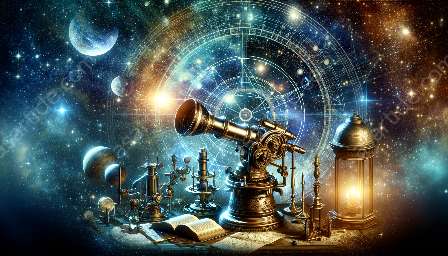Introduction to Space Telescopes and Instrumentation
Space telescopes and instrumentation play a crucial role in advancing our understanding of the universe. They enable us to observe distant celestial objects, study the cosmos, and unravel the mysteries of outer space. In this comprehensive topic cluster, we will explore the innovative technology, scientific significance, and engineering principles behind space telescopes and instrumentation, and their connection to optics in astronomy and astrophysics, as well as optical engineering.
Understanding Optics in Astronomy and Astrophysics
Optics in astronomy and astrophysics is a fundamental field that focuses on the study of light and its interaction with celestial objects. It involves the use of optical instruments, such as telescopes, to capture and analyze the light emitted or reflected by stars, planets, galaxies, and other cosmic entities. Through advanced optical techniques, astronomers and astrophysicists are able to gather valuable data and observations that contribute to our knowledge of the universe.
Exploring Optical Engineering in Space Exploration
Optical engineering plays a critical role in the design, development, and optimization of space telescopes and instrumentation. It encompasses the application of optical principles, materials, and technologies to create sophisticated imaging systems and analytical tools for space exploration. The fusion of optical engineering with space science enables the creation of high-performance instruments capable of capturing and analyzing light from the farthest reaches of the cosmos.
The Evolution of Space Telescopes
Space telescopes have evolved significantly over the years, with each new generation pushing the boundaries of observational capabilities and scientific discovery. From the pioneering Hubble Space Telescope to the cutting-edge James Webb Space Telescope, these powerful instruments have revolutionized our understanding of the universe, providing breathtaking images and groundbreaking insights into cosmic phenomena.
Advancements in Space Telescope Instrumentation
Instrumentation for space telescopes continues to advance, driven by innovative technologies and scientific objectives. From advanced spectrographs and imaging detectors to precision guidance systems, these instruments are pivotal in enabling astronomers and researchers to acquire and analyze deep-space data with unprecedented accuracy and sensitivity.
Collaborative Efforts in Space Observation and Research
Space exploration and astronomical research rely on collaborative efforts among scientists, engineers, and organizations worldwide. Through international partnerships and interdisciplinary teamwork, the development and operation of space telescopes and instrumentation are enhanced, leading to new discoveries and a deeper understanding of the universe.
Impact of Space Telescopes and Instrumentation
The impact of space telescopes and instrumentation extends beyond astronomy and astrophysics, influencing diverse fields such as planetary science, astrobiology, and cosmology. By providing unparalleled observations and data, these instruments contribute to addressing fundamental questions about the origins, evolution, and composition of celestial objects, as well as the nature of the cosmos itself.
Looking Toward the Future of Space Exploration
As technology continues to advance, the future of space telescopes and instrumentation holds exciting prospects for groundbreaking discoveries and transformative insights into the universe. From next-generation telescopes to innovative optical engineering solutions, the trajectory of space exploration is poised to unravel new cosmic mysteries and inspire future generations of astronomers and space scientists.

